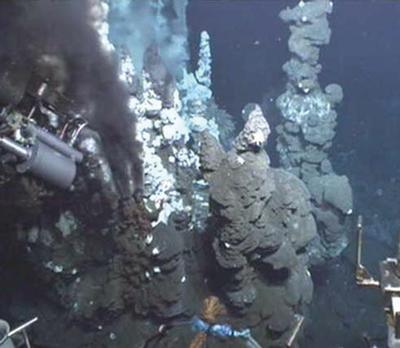Research project: Biogeochemical cycling in hydrothermal settings south of the Antarctic Polar Front
Hydrothermal activity and associated ecosystems south of the Antarctic polar front (i.e. East Scotia Ridge and Central Bransfield Basin) have been investigated during multidisciplinary expeditions as part of the ChEsSo project. These studies have led to the discovery of extensive venting ans dense chemosynthetic communities on segments E2 and E9 of the East Scotia Ridge. In the Central Bransfield Basin, diffuse hydrothermal discharge was observed on a sediment-hosted volcanic edifice situated on the central rift axis, but recognizable vent fauna were not observed.

